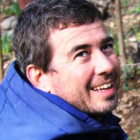For scholars trained in Western environmental history or environmental studies, the phrase “the death of nature” may evoke decades-old warnings, once traced by the likes of Rachel Carson, Bill McKibben, or Carolyn Merchant. These earlier accounts were in many ways genesis narratives for new political missions, social collectives, and, indeed, academic subfields. But “nature,” in that earlier historical moment, was still largely regarded as the thing that the city was not. It was often framed as though it “died” at the hands of humans, particularly in cities.
Today the conceptual content of “nature,” and our ability to trace its existence in cities, has changed dramatically. The idea of a more integrated socio-nature allows us to recognize how social and nonhuman natural processes are always intertwined. The planet’s ecological present, as narrated in the work of Elizabeth Kolbert or Amitav Ghosh, for example, may still be represented in terms of the death of nature, but our sensitivity to the idea of nature as integrated with human processes can sometimes illuminate how the loss of one aspect of nature can bring another to life in the consciousness of human societies.
Consider, for example, a case from Mumbai. Population-dense, coastal, and largely devoid of open spaces, Mumbai is a so-called hypercity in the heart of a global epicenter of urbanization, South Asia. This may not be a city often associated with nature, per se, but its environmental future most certainly animates a great deal of public life and lived experience.
While conducting research at an environmental design institute (discussed more fully in Building Green (2017)), I received an invitation to assist with a biodiversity assessment in one of the city’s only significant existing green spaces: the 54-acre closed-canopy forest and temple complex in the heart of South Mumbai called the Doongerwadi Forest. The grove surrounds several Zoroastrian (Parsi) Towers of Silence (dokmas), which have functioned as sites for funerary rituals for centuries. In Parsi religious tradition, deceased community members are laid out on high, open platforms in dokma enclosures. Exposed to the sky, the bodies decompose, largely through the scavenging work of vultures.
But the controversial use of a relatively new veterinary drug, diclofenac, has devastated vulture populations across the Indian Subcontinent. It was first used primarily in livestock, on whose carcasses vultures naturally feed, but following discovery of the drug’s fatal poisoning effects, diclofenac was banned for veterinary use. By 2007, diclofenac toxicity was well established as the primary cause of a catastrophic vulture population crash across South Asia. According to the Bombay Natural Historical Society, previously robust regional populations of oriental white-backed vultures had declined to the point of near extinction, and long-billed and slender-billed vulture populations had declined by 97 percent. The ban, however, was not implemented for use of the drug in humans. Diclofenac is marketed as an affordable and effective anti-inflammatory, and so it remains widely available. That availability ensures its persistent, if illegal, use in veterinary applications.
As vulture numbers crashed, decomposition processes that had functioned for centuries on the Doongerwadi’s dokma platforms were disrupted, and so too were the final funerary rites for Mumbai’s Parsi deceased. Committed to maintaining the integrity of an ancient life-cycle ritual, tower stewards used solar collectors in an attempt to substitute the work of heat and light for that of the now-absent vultures. The results were insufficient, and countless funerals were disrupted. We might consider the disappearance of Mumbai’s vultures as a bridge between human and nonhuman experiences of nature’s collapse: a death in the nonhuman domain was deeply intertwined with profound losses in the world of human ritual practice, identity reproduction, and cultural meaning.

A juvenile white-rumped vulture (Gyps bengalensis).
A juvenile white-rumped vulture (Gyps bengalensis).
Photograph by Lip Kee, 14 April 2008.
Accessed on 24 January 2019. Click here to view Flickr source.
 This work is licensed under a Creative Commons Attribution-ShareAlike 2.0 Generic License.
This work is licensed under a Creative Commons Attribution-ShareAlike 2.0 Generic License.
The matter fueled outrage both inside and outside of Mumbai’s Parsi community. It brought the ritual, and the extraordinary urban forest in which it took place, to the forefront of public consciousness, and it foregrounded a vast and undeveloped green space which, for real-estate developers, harbored the potential for astronomical profits.
Sensing that the demise of the vultures, and thus the funerary ritual, could call into question the legitimacy of the very forest that stood in place to protect the Towers of Silence, Doongerwadi stewards sought new ways to understand and amplify the broader function, value, and history that the forest represents. They contacted me with an invitation to assist as they enumerated its myriad life-forms and ecosystem functions. In addition to providing rare habitat for biodiversity, they showed, the Doongerwadi absorbs CO2, mitigates pollution and noise, and provides permeable surfaces that absorb rainwater. The aim was to understand, and then to publicly narrate, how the forest was simultaneously sacred and ecological; its dual mission could only be served if it was preserved as a standing forest.
Although the future of the Doongerwadi is still unresolved, the case underlines how the death and life of twenty-first-century nature are mutually experienced and co-produced. Together with the undeniable gravity of one form of loss—loss of the vultures, and with them the continuity of a core life-cycle ritual—new ways of seeing and ascribing meaning to other aspects of non-human nature in the city were also forged and mobilized. What followed, and is ongoing at the time of writing, was the emergence of newly constituted affinity groups, new accounts of Mumbai’s urban nature, and perhaps most crucially, new engagements with the social and natural stakes of the present, and possibilities for its future.
How to cite
Rademacher, Anne. “Mumbai’s Doongerwadi Forest: Revisiting the Death of Nature in the Future City.” Environment & Society Portal, Arcadia (Spring 2019), no. 5. Rachel Carson Center for Environment and Society. doi.org/10.5282/rcc/8579.
ISSN 2199-3408
Environment & Society Portal, Arcadia
 This work is licensed under a Creative Commons Attribution 4.0 International License.
This work is licensed under a Creative Commons Attribution 4.0 International License.
2019 Anne Rademacher
This refers only to the text and does not include any image rights.
Please click on an image to view its individual rights status.
- Carson, Rachel. Silent Spring. Boston: Houghton Mifflin, 1962.
- Ghosh, Amitav. The Great Derangement: Climate Change and the Unthinkable. Chicago: University of Chicago Press, 2016.
- McKibben, Bill. The End of Nature. New York: Random House Trade Paperbacks, 2006.
- Merchant, Carolyn. The Death of Nature: Women, Ecology, and the Scientific Revolution. San Francisco: HarperSanFrancisco, 1989.
- Rademacher, Anne, and K. Sivaramakrishnan, eds. Ecologies of Urbanism in India: Metropolitan Civility and Sustainability. Hong Kong: Hong Kong University Press, 2013.
- Rademacher, Anne, and K. Sivaramakrishnan, eds. Places of Nature in Ecologies of Urbanism. Hong Kong: Hong Kong University Press, 2017.
- Rademacher, Anne. Building Green: Environmental Architects and the Struggle for Sustainability in Mumbai. Oakland: University of California Press, 2017.










